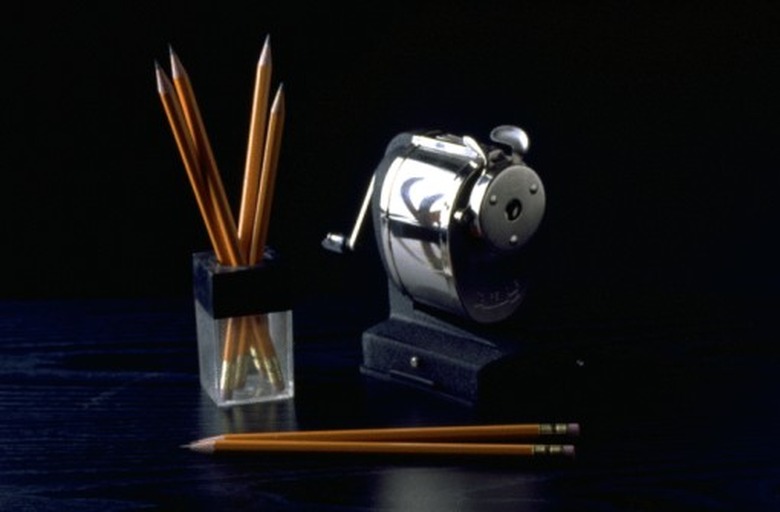Types Of Simple Machines In A Pencil Sharpener
There are six different types of simple machines: a lever, a wedge, an inclined plane, a screw, a pulley and a wheel and axle. The effectiveness of a simple machine is in how it multiplies force, meaning there is more work output from the machine than energy put into it. This is called the machine's "mechanical advantage." Pencil sharpeners use either just a wedge or a wedge and a wheel and axle together.
Compound Machines
Compound Machines
When a machine uses two or more simple machines, it is called a compound machine. Most complex machines use a series of simple machines. When they do, often the force applied to one simple machine is transferred to the next simple machine in a series. A pencil sharpener that uses a crank is an example of a compound machine since it uses two simple machines.
Wedge
Wedge
In a pencil sharpener, the blade that shaves off the wood and lead from a pencil to make a sharp point is a simple machine called a wedge. A wedge is constructed from two inclined planes put together. Other examples of wedges are knives, axes, shovels, forks and even teeth. The sharper the wedge is, the more of a mechanical advantage it has. It works by transferring the horizontal force you apply into vertical force. A small, handheld pencil sharpener is usually a simple wedge.
Wheel and Axle
Wheel and Axle
A crank-type pencil sharpener employs a wheel and axle in addition to a wedge; you turn the axle by turning a crank, which then transfers the force from your hand to the wheel. The advantage of a wheel and axle is that it allows you to turn things using less force than by hand, though over a greater distance. Other examples of a wheel and axle are bicycle gears and steering wheels.
Putting It All Together
Putting It All Together
When using a handheld pencil sharpener without a crank, you are using only one simple machine — a wedge. When using a pencil sharpener with a crank, however, you are using both a wedge and a wheel and axle. When you turn the crank, you turn the wheel, which in this case has a wedge attached to it. The force you apply to the axle moves to the wheel and then transfers to the wedge, making it easier to sharpen the pencil.
Cite This Article
MLA
Radder, Jan. "Types Of Simple Machines In A Pencil Sharpener" sciencing.com, https://www.sciencing.com/types-simple-machines-pencil-sharpener-8035484/. 24 April 2017.
APA
Radder, Jan. (2017, April 24). Types Of Simple Machines In A Pencil Sharpener. sciencing.com. Retrieved from https://www.sciencing.com/types-simple-machines-pencil-sharpener-8035484/
Chicago
Radder, Jan. Types Of Simple Machines In A Pencil Sharpener last modified March 24, 2022. https://www.sciencing.com/types-simple-machines-pencil-sharpener-8035484/
